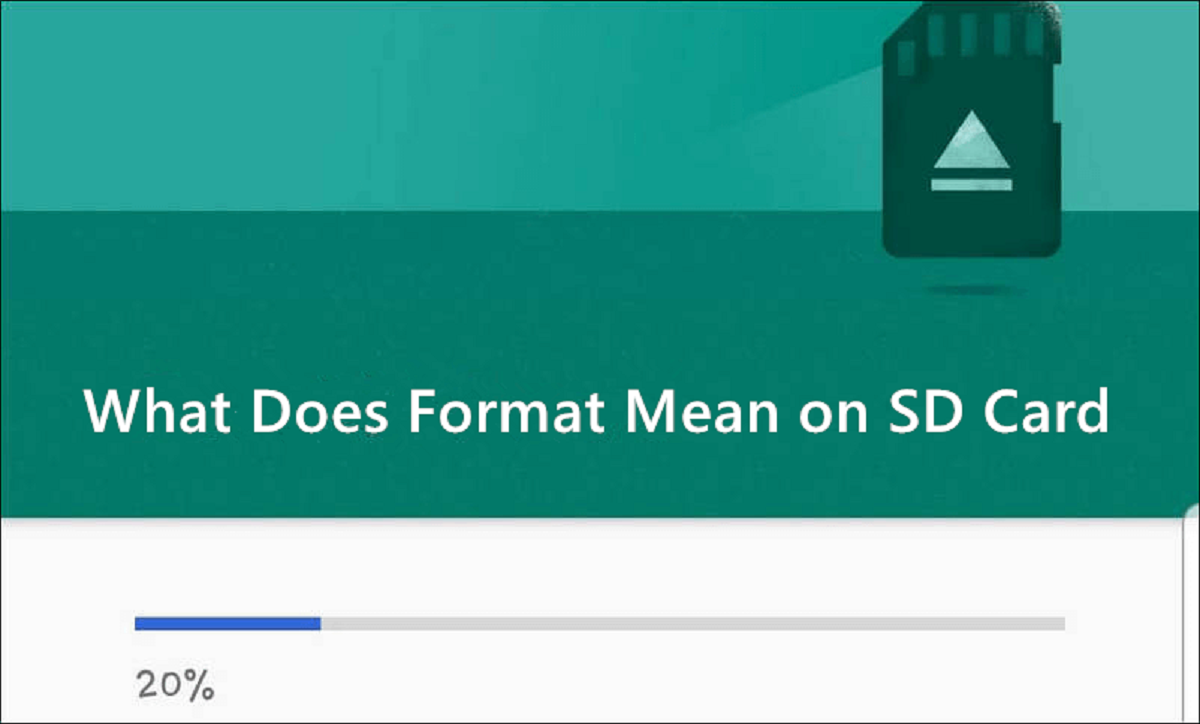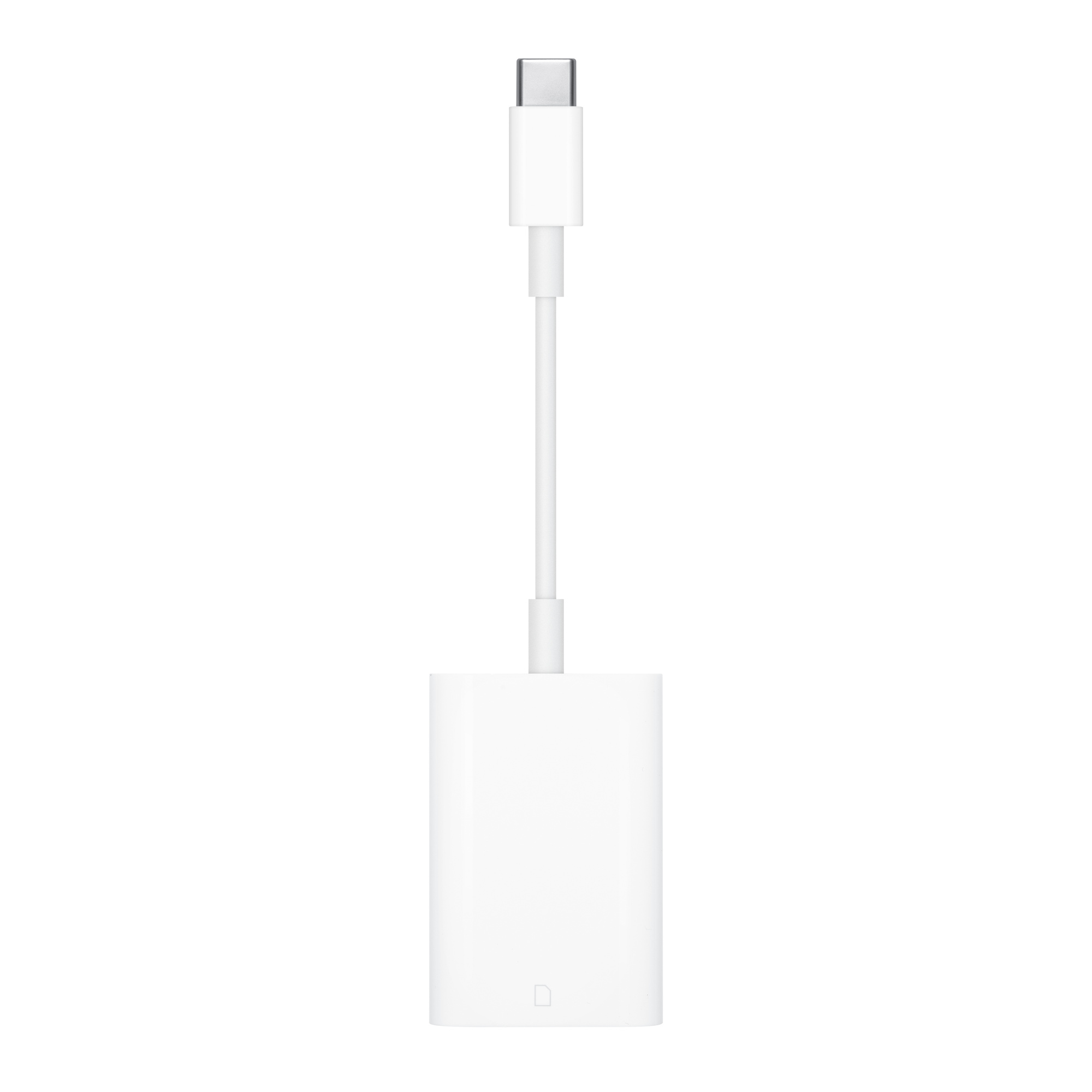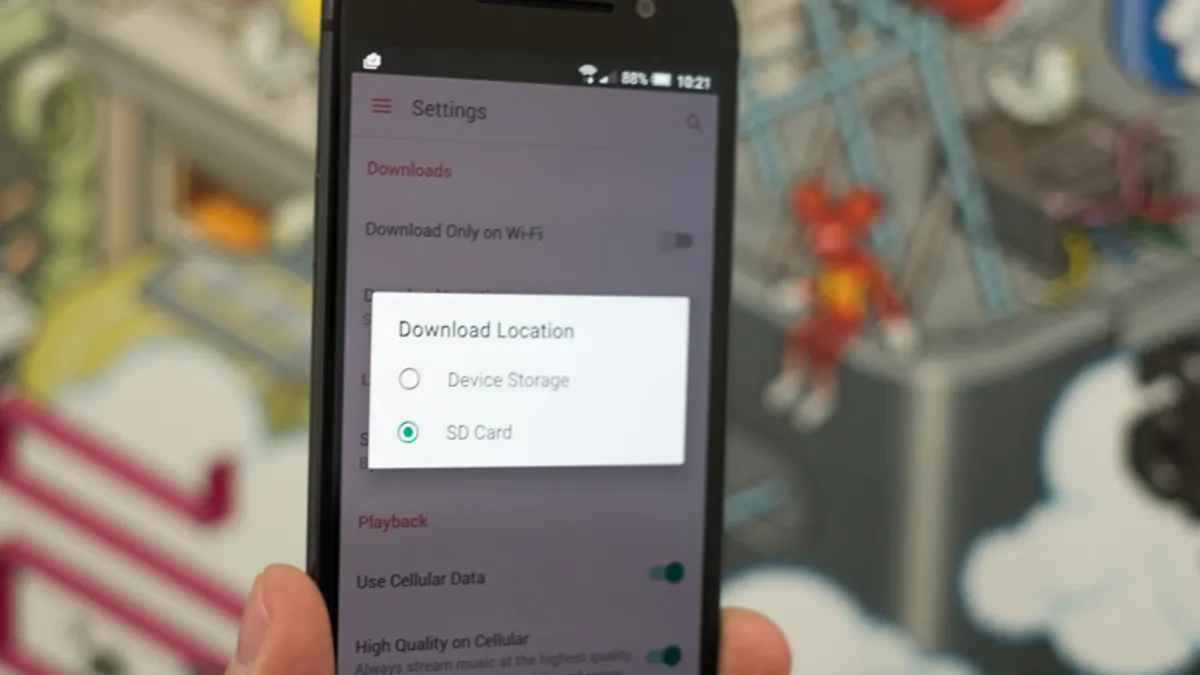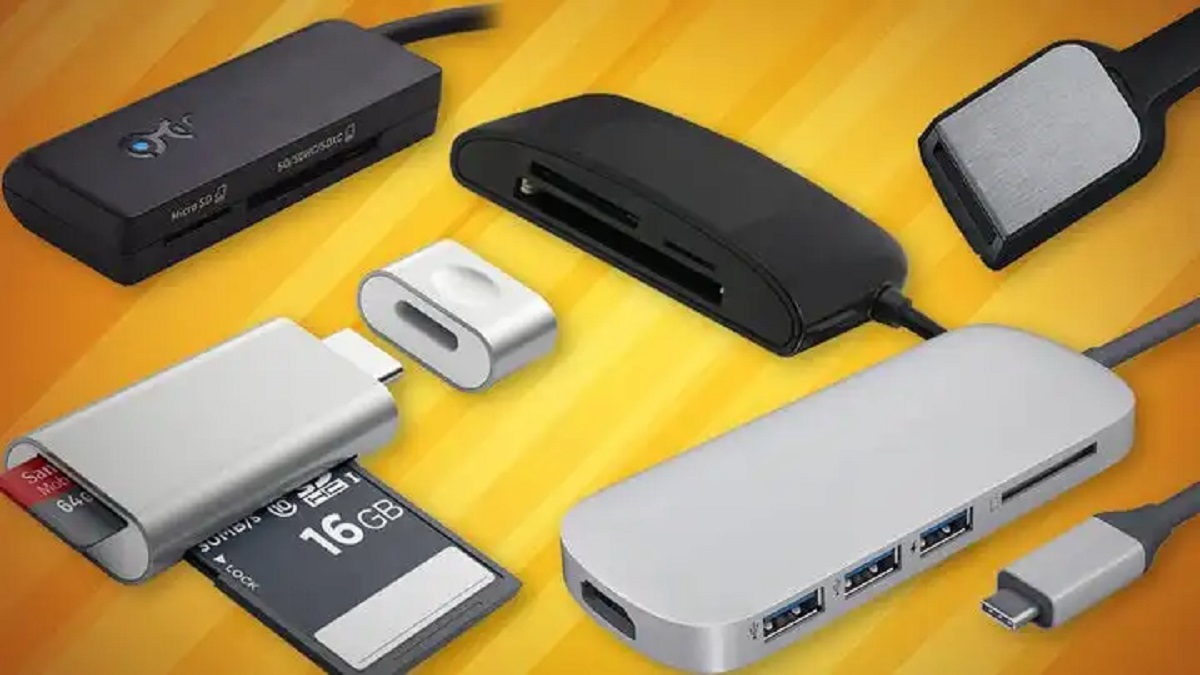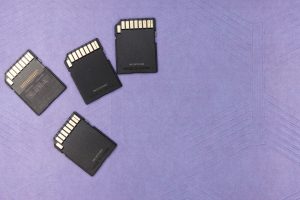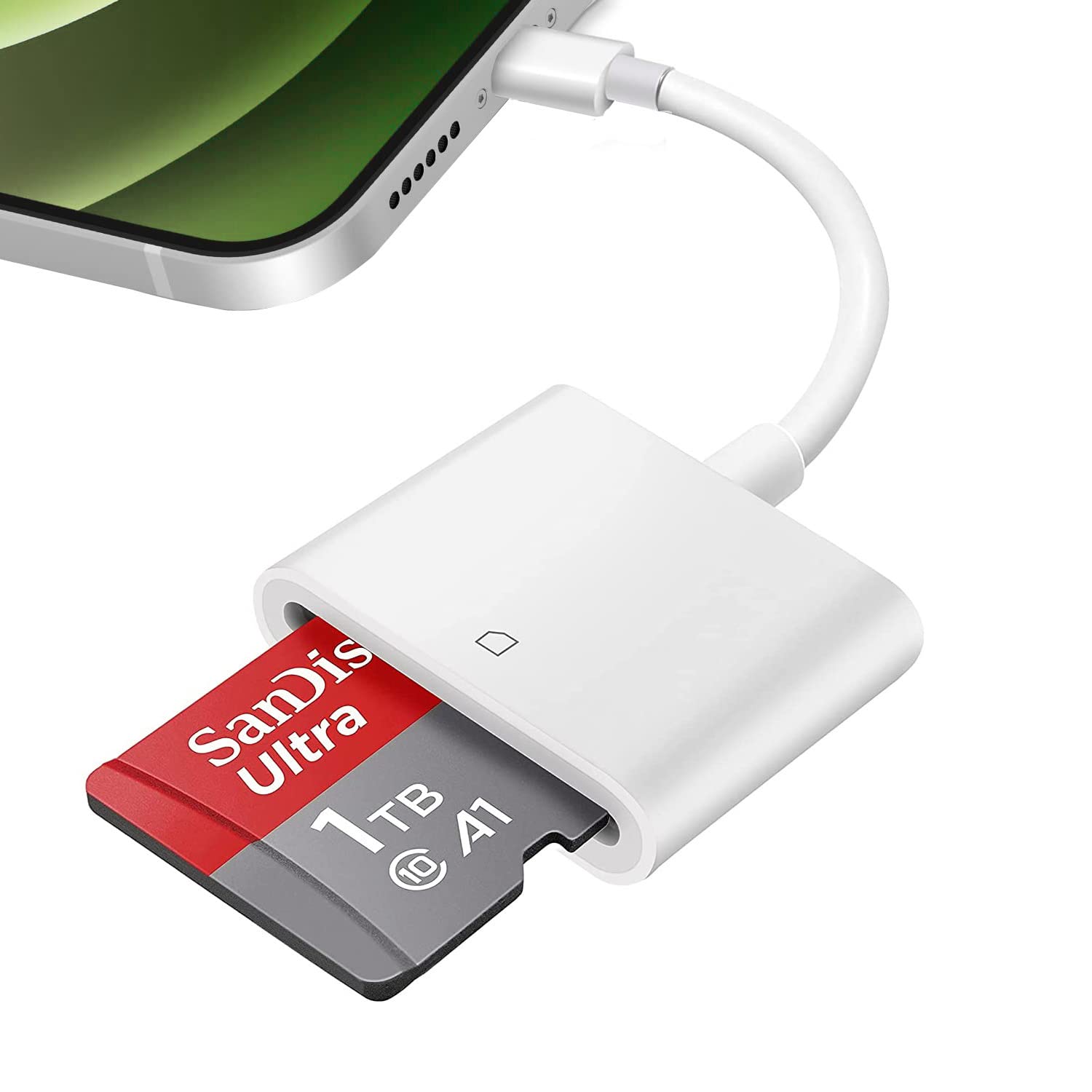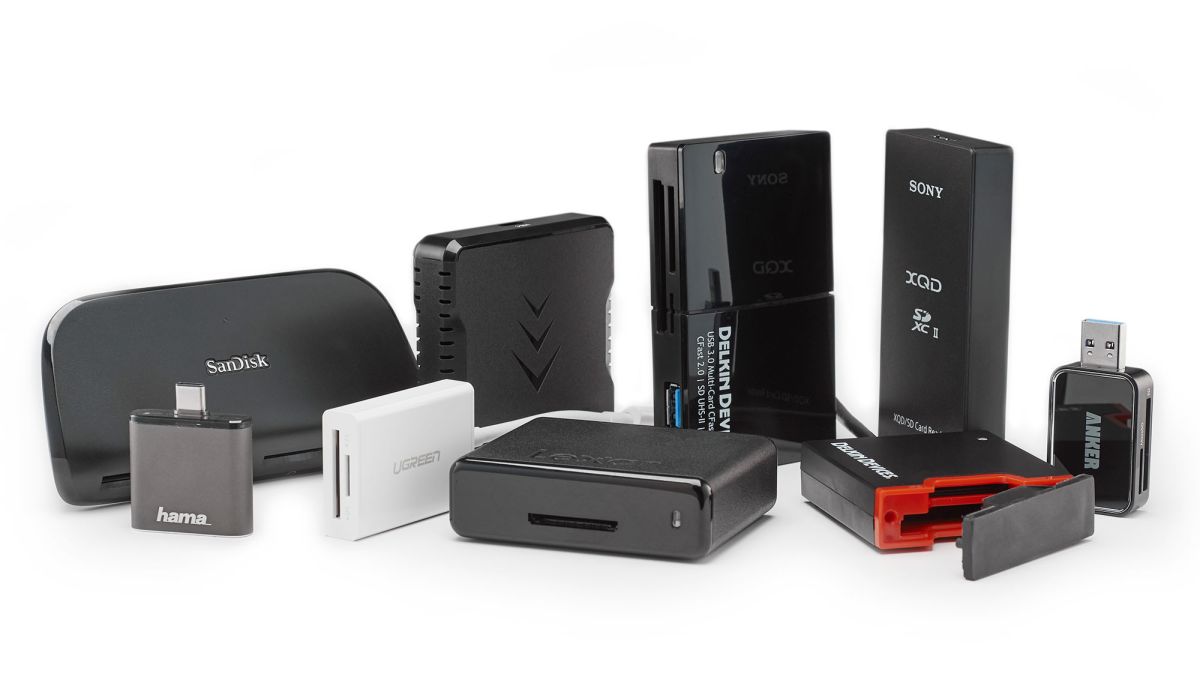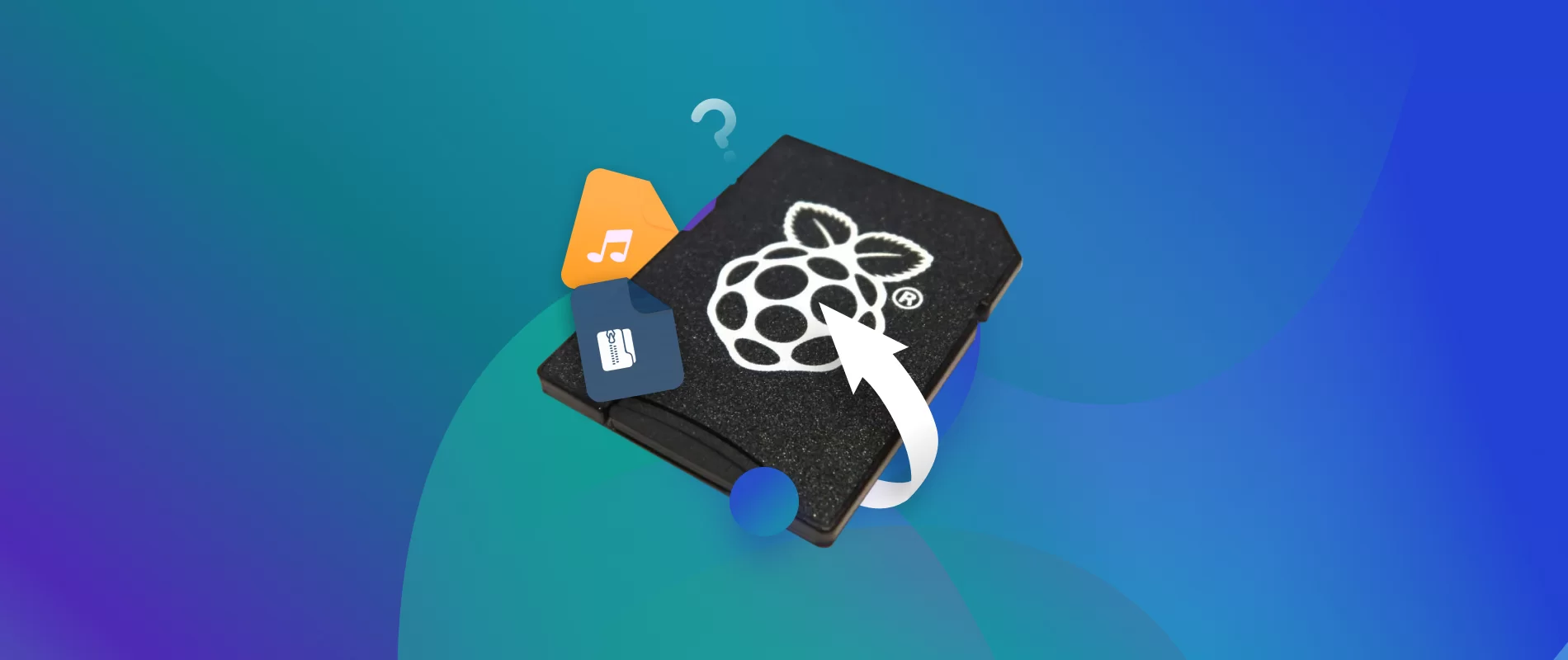Introduction
An SD card, also known as a Secure Digital card, is a small removable storage device commonly used in portable electronic devices such as smartphones, digital cameras, tablets, and handheld gaming consoles. It provides an easy way to expand the storage capacity of these devices, allowing users to store more photos, videos, music, and data.
However, before you can use an SD card, it needs to be formatted. Formatting is the process of preparing the SD card to work with a specific device or operating system. It creates a file system that allows the device to read and write data to the card efficiently.
So, why do you need to format an SD card? The primary reason is to ensure compatibility between the card and the device you are using. Different devices and operating systems have different file system requirements, and by formatting the SD card, you can ensure that it is optimized for the device you are using.
Formatting an SD card can also resolve certain issues that may arise, such as file corruption or errors. It clears the card of any existing data and restores it to its original state, enhancing its performance and reliability.
There are different types of formatting options available, such as quick format and full format. The choice between these options depends on your specific needs and requirements. It’s important to understand the differences between them to make an informed decision.
In this article, we will explore the different types of formatting, discuss the advantages and disadvantages of quick format and full format, and provide step-by-step instructions on how to format an SD card on various devices and operating systems.
What is an SD card?
An SD card, short for Secure Digital card, is a type of portable storage device that is widely used in electronic devices such as digital cameras, smartphones, tablets, and gaming consoles. It is a small, removable memory card that provides users with additional storage capacity for storing photos, videos, music, and other types of data.
SD cards come in different physical sizes, including standard SD, mini SD, and micro SD. The most commonly used size today is the micro SD, which is smaller in size and compatible with most modern devices. Despite their size differences, all SD cards function in a similar way, using flash memory technology to store and retrieve data.
SD cards are designed to be portable and durable, making them ideal for use in mobile devices. They are resistant to shock, water, and extreme temperatures, which allows users to take them on outdoor adventures or use them in harsh environments without worrying about data loss.
One of the main advantages of SD cards is their flexibility and compatibility. They can be easily inserted into compatible devices, providing instant additional storage space. SD cards are also interchangeable, meaning you can use the same card in multiple devices as long as they support the same type of SD card.
SD cards also offer different storage capacities, ranging from a few gigabytes to several terabytes. This wide range allows users to choose the capacity that suits their needs and budget. Whether you need an SD card for everyday use or professional-grade storage, there is likely a suitable option available.
In addition to storage capacity, SD cards also have different speed classes, which indicate their data transfer rates. Higher speed classes allow for faster read and write speeds, making them ideal for tasks that require quick data transfer, such as recording high-resolution videos or capturing multiple continuous shots with a camera.
In summary, an SD card is a portable storage device that provides users with additional storage capacity for their electronic devices. It is versatile, durable, and available in various sizes, capacities, and speed classes to meet a wide range of storage needs.
Why do you need to format an SD card?
Formatting an SD card may seem like an unnecessary step, especially if the card brandishes an ample amount of storage space right out of the package. However, formatting your SD card is essential for several reasons.
Firstly, formatting allows for better compatibility between the SD card and the device or operating system you are using. Different devices, such as cameras, smartphones, and computers, may require specific file systems to read and write data effectively. By formatting the SD card, you ensure that it conforms to the requirements of your device, reducing the risk of potential compatibility issues.
Secondly, formatting an SD card helps optimize its performance. Over time, the card may become fragmented or contain invalid data, leading to slower read and write speeds. By formatting the card, you reset its file system, removing any unnecessary data or fragmentation and allowing it to operate more efficiently. This can be particularly beneficial when using the SD card for tasks that demand high data transfer speeds, such as recording 4K videos or capturing rapid-fire bursts of photos.
Additionally, formatting can address potential issues with file corruption or errors. If you encounter problems accessing files or notice that the SD card behaves in an erratic manner, formatting can often resolve these issues. It clears the card of any corrupted data and restores it to a working state, improving its reliability and reducing the chances of encountering errors in the future.
Formatting your SD card also offers the advantage of ensuring privacy. When you format an SD card, the existing data on it is erased, making it more difficult for anyone to recover the previously stored information. This can be particularly important if you plan to sell or dispose of the SD card, as you want to ensure that your personal data remains secure.
Finally, formatting an SD card provides a clean slate for organizing and managing your files. It removes any previously stored data, creating a fresh environment for you to structure your files as desired. This can be helpful for maintaining a well-organized storage system, especially when dealing with large amounts of data or multiple media files.
In summary, formatting an SD card is necessary to ensure compatibility, optimize performance, address potential issues, maintain privacy, and provide a clean slate for organizing your files. It is a vital step in preparing the SD card to function efficiently with your device or operating system.
Different types of formatting
When it comes to formatting an SD card, there are different options available to choose from, depending on your specific needs and requirements. Let’s explore the two main types of formatting: quick format and full format.
Quick format: Quick format is a fast and convenient way to format an SD card. It deletes the file allocation table (FAT) and clears the data stored on the card, but does not perform a thorough scan for bad sectors or errors. Quick format is typically used when you want to erase the data quickly and start fresh without investing too much time. However, it is important to note that quick format does not completely erase the data from the card and it can potentially be recovered by specialized software.
Full format: Full format, also known as low-level format, is a more comprehensive formatting option. It not only deletes the file allocation table (FAT) but also performs a thorough scan of the entire SD card, checking for bad sectors and repairing any errors found. Full format is a more time-consuming process compared to quick format but offers additional benefits. It ensures the card is scanned for any potential issues and provides a more secure and reliable format. Full format is recommended if you suspect there might be errors with the SD card or if you want to completely wipe the card to ensure data cannot be recovered.
It is important to note that the type of formatting you choose depends on your specific needs and the condition of the SD card. If the card is new or in good working condition, a quick format may be sufficient. On the other hand, if the card has been used for a long time or you suspect there might be issues, a full format can help restore its performance and reliability.
It is also worth mentioning that some devices or operating systems may offer additional formatting options or variations of quick and full format. These options may carry different names but serve the same purpose of formatting the SD card, so it is important to consider the instructions specific to your device or operating system.
In summary, there are two main types of formatting options: quick format and full format. Quick format offers a fast and convenient way to erase data from the SD card, while full format provides a more thorough scan for errors and bad sectors. The type of formatting you choose depends on your specific needs and the condition of the SD card.
Quick format vs. full format
When it comes to formatting an SD card, you have the choice between a quick format and a full format. Let’s take a closer look at the differences between these two formatting options.
Quick format: As the name suggests, a quick format is a fast way to format an SD card. It deletes the file allocation table (FAT), which keeps track of the files stored on the card, but it does not perform a thorough scan for errors or bad sectors. The quick format option is best suited for situations where you need to erase the data on the card quickly and start afresh. It is a convenient choice when you want to use the SD card in a different device or if you are experiencing minor issues such as file corruption or read errors.
While a quick format is fast and time-efficient, it is important to remember that it does not completely erase the data from the SD card. It only removes the file pointers, making the data inaccessible to the user. However, with the use of specialized software, it may still be possible to recover some of the data. Therefore, if you have sensitive or confidential data on the card that you want to ensure is completely irretrievable, a full format would be a more suitable choice.
Full format: A full format, also known as a low-level format, is a more comprehensive option compared to a quick format. In addition to deleting the file allocation table, a full format performs a thorough scan of the entire SD card, checking for bad sectors and repairing any errors found. This process takes more time, especially for larger capacity cards, but it offers several advantages.
One of the main advantages of a full format is that it ensures the SD card is in the best possible condition. By scanning the entire card for errors and bad sectors, a full format helps to identify and correct any issues that may impact the card’s performance and reliability. It provides a fresh start and can help resolve problems such as slow read/write speeds, file corruption, or frequent read errors.
Another advantage of a full format is that it offers a higher level of privacy and security. Since a full format scans the entire card and overwrites the existing data, it becomes more challenging for anyone to recover previously stored information. If you are planning to sell or dispose of the SD card, a full format ensures that your personal data remains secure.
However, it is worth noting that a full format is not required on a regular basis unless you are experiencing significant issues with the SD card or wish to completely wipe the card. In most cases, a quick format is sufficient for routine formatting needs, such as preparing the card for use in a new device or clearing minor errors.
In summary, the choice between a quick format and a full format depends on your specific needs. A quick format is a fast and convenient option for routine formatting, while a full format offers a more thorough scan for errors and bad sectors, improving overall performance and ensuring data privacy. Consider the condition of your SD card and the level of privacy you require when deciding between the two formatting options.
How to format an SD card on Windows
Formatting an SD card on a Windows computer is a straightforward process that can be done using the built-in formatting tool. Here’s a step-by-step guide on how to format an SD card on Windows:
- Insert the SD card into your computer’s SD card reader or adapter. Make sure the computer recognizes the SD card and assigns it a drive letter.
- Open “File Explorer” or “This PC” on your Windows computer.
- Locate the SD card in the list of drives. It is usually labeled with the assigned drive letter.
- Right-click on the SD card drive and select “Format” from the drop-down menu. This will open the Format window.
- In the Format window, you can specify the desired settings for the format:
- File system: Choose the file system that is compatible with your device or operating system. For most SD cards, the recommended file system is FAT32.
- Allocation unit size: This determines the cluster size on the SD card. It is usually best to leave it at the default setting unless you have specific requirements.
- Volume label: You can enter a name to label the SD card, which will appear as its name in Windows.
- Quick Format: If you want to perform a quick format, ensure this option is checked. If unchecked, it will perform a full format.
- Double-check the selected settings and make any necessary adjustments.
- Click on the “Start” button to initiate the formatting process.
- A warning message will appear, notifying you that all data on the SD card will be deleted. Confirm that you have backed up any important data and click “OK” to proceed.
- Windows will begin formatting the SD card based on the specified settings. The progress bar will indicate the status of the format.
- Once the format is complete, you will see a message indicating that the format was successful.
- Click “OK” to close the Format window.
- The SD card is now formatted and ready to be used with your device.
It’s important to remind you that formatting an SD card will erase all data stored on it. Make sure to back up any important files before proceeding with the formatting process.
In summary, formatting an SD card on Windows involves inserting the card, opening the Format window, selecting the desired settings, and initiating the format. Following these steps will allow you to format the SD card and prepare it for use with your device.
How to format an SD card on Mac
Formatting an SD card on a Mac is a straightforward process that can be done using the built-in Disk Utility app. Here’s a step-by-step guide on how to format an SD card on Mac:
- Insert the SD card into your Mac’s SD card slot or connect it using a card reader.
- Open Finder and click on “Applications” in the sidebar.
- Scroll down and open the “Utilities” folder.
- Locate and open the “Disk Utility” app.
- In the Disk Utility window, you will see a list of drives and volumes on the left-hand side.
- Select the SD card from the list of drives. Be careful to choose the correct device.
- Click on the “Erase” tab at the top of the Disk Utility window.
- In the Erase tab, you can specify the desired settings for the format:
- Name: You can enter a name for the SD card.
- Format: Choose the file system that is compatible with your device or operating system. For most SD cards, the recommended format is MS-DOS (FAT32).
- Scheme: Choose “GUID Partition Map” for SD cards 64GB or larger, or “Master Boot Record” for smaller capacity cards.
- Double-check the selected settings and make any necessary adjustments.
- Click on the “Erase” button at the bottom right of the Disk Utility window.
- A warning message will appear, notifying you that all data on the SD card will be erased. Confirm that you have backed up any important files and click “Erase” to proceed.
- Disk Utility will begin formatting the SD card based on the specified settings. The progress bar will indicate the status of the format.
- Once the format is complete, you will see a message indicating that the erase process was successful.
- Click “Done” to close the Disk Utility window.
- The SD card is now formatted and ready to be used with your device.
Just a reminder that formatting an SD card will erase all data stored on it. Ensure that you have backed up any important files before proceeding with the formatting process.
In summary, formatting an SD card on Mac involves opening the Disk Utility app, selecting the SD card, specifying the desired format settings, and initiating the erase process. By following these steps, you can easily format an SD card and prepare it for use with your device.
Formatting an SD card on Android devices
Formatting an SD card on an Android device can be done directly from the device’s settings. The exact steps may vary slightly depending on the Android version or device model. Here’s a general guide on how to format an SD card on Android:
- Open the Settings app on your Android device.
- Scroll down and tap on “Storage” or “Storage & USB.”
- Under the “Device storage” or “Internal storage” section, you should see an option for “SD card” or “Portable storage.”
- Tap on the SD card option to access the SD card settings.
- In the SD card settings, you may find an option to “Format” or “Erase SD card.” Tap on this option.
- A warning message will appear, notifying you that formatting the SD card will erase all data on it. Confirm that you have backed up any important files and tap “Format” or “Erase” to proceed.
- The Android device will begin formatting the SD card, and you will see a progress indicator on the screen.
- Once the format is complete, you will receive a notification or see a message indicating that the process was successful.
- Tap “OK” or “Done” to close the formatting dialogue.
- The SD card is now formatted and ready to be used with your Android device.
Note that formatting an SD card will erase all data stored on it. Therefore, ensure that you have backed up any important files before proceeding with the formatting process.
If your Android device does not provide an option to format the SD card in the settings, you can also use third-party file manager apps from the Google Play Store. These apps often have built-in formatting tools that allow you to format the SD card directly from the app interface, following similar steps as mentioned above.
In summary, formatting an SD card on Android involves accessing the device’s settings, locating the SD card option, selecting the format or erase option, confirming the action, and allowing the device to complete the format. By following these general steps, you can easily format an SD card on your Android device.
Formatting an SD card on iOS devices
Unlike Android devices, iOS devices such as iPhones and iPads do not have the ability to directly format an SD card. However, there are alternative options available for formatting an SD card for use with iOS devices. Here are a few methods you can use:
Method 1: Using a computer:
- Insert the SD card into a card reader and connect it to your computer.
- Open the file explorer or disk utility application on your computer.
- Locate the SD card drive and right-click on it.
- Select the “Format” option from the drop-down menu.
- Choose the file system and other formatting options compatible with iOS devices (usually FAT32).
- Initiate the format process and wait for it to complete.
- Eject the SD card from the computer and remove it from the card reader.
- Insert the formatted SD card into your iOS device using a compatible adapter (e.g., Lightning to SD Card Camera Reader).
Method 2: Using a third-party app:
- Install a third-party file management app from the App Store that supports formatting SD cards.
- Connect the SD card to your iOS device using a compatible adapter.
- Open the third-party app and navigate to the SD card section.
- Look for the format or erase option within the app’s settings or tools.
- Select the desired formatting options (e.g., file system) and initiate the formatting process.
- Wait for the app to complete the formatting process.
- Once the format is complete, your SD card is ready to be used with your iOS device.
It’s important to note that formatting an SD card will delete all data stored on it. Therefore, make sure to back up any important files before proceeding with the formatting process.
In summary, while iOS devices do not natively support formatting SD cards, you can format an SD card using a computer or a third-party file management app. These methods allow you to prepare the SD card for use with your iOS device by choosing the appropriate file system and formatting options.
Best practices for formatting an SD card
Formatting an SD card is a crucial step to ensure optimal performance and compatibility. To make the most out of this process, here are some best practices to follow:
1. Backup important data: Before formatting, always make sure to back up any important files or data stored on the SD card. Formatting will erase all data, and having a backup ensures that you can recover any valuable information.
2. Choose the appropriate file system: Select the file system that is compatible with your device or operating system. For most uses, the recommended file system is FAT32, as it offers cross-platform compatibility between Windows and Mac. However, if you require compatibility with larger file sizes, consider exFAT or NTFS (Windows) or HFS+ (Mac).
3. Consider the allocation unit size: The allocation unit size, also known as the cluster size, determines how data is organized on the SD card. For general use, leaving it at the default setting is recommended. However, if you plan on storing large files or frequently transferring small files, you may opt for a larger allocation unit size to improve performance.
4. Understand the impact of quick format vs. full format: Quick format is a faster option to erase data and prepare the SD card for use. However, a full format performs a more thorough scan for errors and can help resolve issues with the card. Consider the condition of your SD card and your specific needs when choosing between these formatting options.
5. Use reputable formatting tools: When formatting an SD card, it is recommended to use the built-in formatting tools provided by your device or operating system. These tools are specifically designed for compatibility and often offer the necessary features for formatting the SD card correctly.
6. Avoid interrupting the formatting process: When formatting an SD card, it is important to allow the process to complete without interruption. Removing the SD card or turning off the device during formatting can lead to data loss or potential damage to the card.
7. Regularly check for firmware updates: Manufacturers sometimes release firmware updates for SD cards. These updates can improve performance, compatibility, and error handling. Check the manufacturer’s website or use their recommended tools to keep your SD card up to date.
8. Formatting as a troubleshooting step: If you encounter issues with your SD card, such as file corruption or read errors, formatting can be an effective troubleshooting step. It can help resolve minor issues and restore the card to a working state. However, remember to back up your data before formatting.
By following these best practices, you can ensure that your SD card is properly formatted and optimized for performance, compatibility, and longevity.
Conclusion
Formatting an SD card is a necessary step to ensure compatibility, optimize performance, and resolve potential issues. Whether you are using Windows, Mac, Android, or iOS devices, knowing how to format an SD card is essential for maintaining its functionality and reliability.
Throughout this article, we explored the different types of formatting, such as quick format and full format. We discussed the advantages and considerations of each option, allowing you to make an informed decision based on your specific needs. We also provided detailed step-by-step instructions on how to format an SD card on various devices and operating systems, including Windows, Mac, Android, and iOS.
Additionally, we highlighted important best practices for formatting an SD card. These best practices, such as backing up data, choosing the appropriate file system, and regularly checking for firmware updates, ensure that the formatting process is conducted in a safe and efficient manner.
Remember, formatting an SD card will erase all data stored on it, so it is crucial to back up any important files before proceeding with the formatting process. Additionally, always use reputable formatting tools provided by your device or operating system to ensure compatibility and the correct formatting options.
By following these guidelines and best practices, you can effectively format an SD card and optimize its performance and compatibility with your devices. Properly formatted SD cards provide reliable storage, smoother data transfers, and a better user experience for capturing memories, storing files, and enjoying multimedia content.
Now that you have a better understanding of SD card formatting, you can confidently format your SD cards when needed and maximize their performance for all your storage needs.







